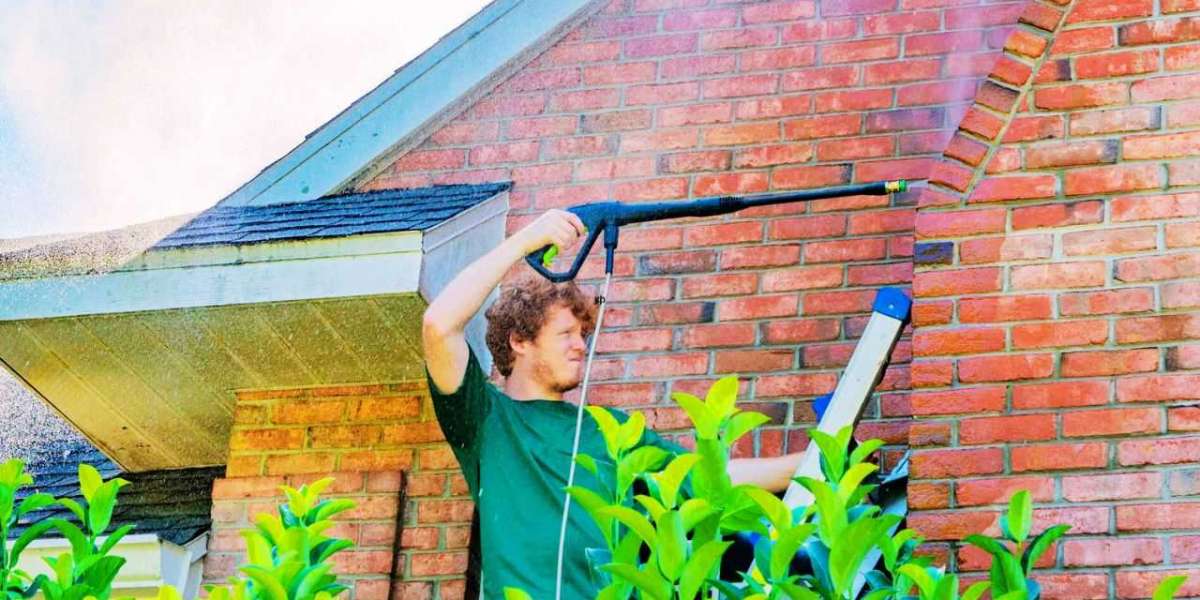Mold and algae thrive in damp, shaded, and poorly ventilated areas. These conditions are common across New Zealand, particularly in areas surrounded by trees, near the coast, or in homes that receive limited sunlight.
Factors that contribute to exterior mold or algae include:
- Frequent rainfall or high humidity
- Lack of direct sunlight on certain walls
- Poor drainage or gutter overflow
- Airborne spores settling on walls and feeding on organic materials
- Infrequent maintenance or delayed cleaning
Once established, mold and algae can spread rapidly across porous surfaces such as brick, stucco, and timber.
How to Identify Mold vs. Algae
While both appear as discoloured patches on walls, they are biologically different:
- Mold tends to be black or dark brown, often slimy or fuzzy in appearance. It’s more likely to cause health concerns if spores enter your living space.
- Algae appears green or greenish-black and usually forms in streaks or layers. It feeds on moisture and organic material such as dust or pollen.
Regardless of the type, both are indicators of excess moisture and poor surface ventilation—and both need prompt attention.
Risks of Leaving Mold or Algae Untreated
Failing to act quickly can lead to serious consequences.
Structural Damage
Mold and algae retain moisture against surfaces, which:
- Accelerates rot in timber cladding
- Causes paint to blister or peel
- Leads to cracks in concrete or mortar joints
- Weakens surface coatings and insulation layers
This trapped moisture eventually seeps into the building envelope, increasing the risk of long-term damage.
Health Concerns
Although exterior mold is outdoors, spores can enter your home through open windows, doors, or ventilation systems. This may result in:
- Allergic reactions
- Respiratory irritation
- Aggravated asthma or sinus issues
Mold is especially problematic for children, the elderly, and people with compromised immune systems.
Decreased Property Value
Visible mold or algae can reduce your home’s visual appeal and signal poor maintenance to potential buyers. A neglected exterior may raise concerns about the overall condition of the property.
A professional house washing service in New Zealand can restore your home’s exterior to its original condition and help avoid costly repairs.
Steps to Take When You Spot Mold or Algae
1. Assess the Severity
Start by walking around your home and noting:
- Which walls or surfaces are affected
- The size and density of the growth
- Whether it's near windows, rooflines, or drainage points
- The direction the wall faces (north-facing walls in New Zealand get less sun and are more prone to growth)
If the patches are widespread or returning quickly after cleaning, it may indicate deeper issues.
2. Check for Underlying Moisture Issues
Mold and algae don’t appear without a moisture source. Investigate the following:
- Are your gutters clogged or overflowing?
- Is your drainage system working properly?
- Are nearby trees or bushes preventing sunlight and airflow?
- Is water pooling at the base of your exterior walls?
Solving the underlying issue is essential before treating the surface.
3. Avoid Harsh DIY Cleaners
Some homeowners turn to bleach or generic cleaners in an attempt to remove mold. While bleach may remove visible stains, it often:
- Doesn’t kill the root spores
- Damages paint, wood, and landscaping
- Causes streaking and surface discolouration
Over-the-counter solutions can make the problem worse or only offer short-term results.
4. Schedule a Professional House Wash
The most effective way to remove mold or algae safely is by hiring a qualified house washing service in New Zealand. These experts use environmentally friendly soft washing methods that are gentle on surfaces but tough on biological growth.
What to Expect From a Professional Cleaning
- A thorough site inspection to assess surfaces and damage
- Low-pressure application of biodegradable solutions to kill mold and algae
- Soft rinsing to remove growth without harming siding or paint
- Optional roof, gutter, and window cleaning
- Recommendations for maintenance and follow-up care
Soft washing is the preferred method for mold removal as it treats the problem at the source, not just on the surface.
Preventing Mold and Algae From Returning
Regular House Washing
Scheduling annual or biannual professional exterior cleaning helps prevent buildup and keeps surfaces resistant to microbial growth.
Improve Drainage and Ventilation
Ensure that:
- Gutters are cleaned regularly
- Downspouts direct water away from the home
- Landscaping doesn’t block airflow around the house
- Shaded areas receive additional attention during maintenance
Apply Mold-Inhibiting Treatments
After cleaning, certain surfaces can be treated with protective coatings or sealants that inhibit future mold or algae development. These are especially useful in high-humidity regions.
Trim Nearby Trees and Bushes
Keep vegetation from shading walls for long periods. Even partial sunlight can dramatically reduce the likelihood of algae or mold returning.
Common Areas Where Growth Occurs
Mold and algae are more likely to develop in certain zones:
- South- and east-facing walls that get less sunlight
- Behind downpipes and gutters where water leaks or splashes
- Under roof eaves or overhangs
- Garden walls, decks, and retaining walls near damp soil
- Painted surfaces that have aged or lost their protective coating
Each of these surfaces requires a unique approach, which is why engaging an experienced house washing service in New Zealand is crucial for a safe and lasting clean.
Why DIY Isn’t Always Enough
While some homeowners may attempt to clean exterior mold themselves, the risks include:
- Incomplete removal of root spores
- Damage to cladding, paint, or sealants
- Water infiltration behind walls
- Inconsistent results that encourage faster regrowth
Without proper equipment and detergents, DIY efforts often provide only a temporary fix. Hiring trained professionals ensures the issue is handled completely and responsibly.
Questions to Ask Your House Washing Provider
To ensure the job is done correctly, ask:
- What methods do you use for mold and algae removal?
- Are your cleaning solutions eco-friendly and safe around pets and plants?
- Do you offer a guarantee or follow-up care?
- Can you also inspect gutters, downpipes, and roofs for potential leaks?
- Are your technicians fully trained and insured?
A trustworthy provider of house washing service in New Zealand will offer transparent answers and a clear cleaning plan.
Conclusion
Mold and algae on your home’s exterior walls are more than a cosmetic problem—they are indicators of deeper moisture and maintenance issues that can affect your home’s health, safety, and appearance. Ignoring these signs may lead to long-term damage and costly repairs.
Fortunately, with the right approach and professional help, mold and algae can be eliminated effectively and safely. A reliable house washing service in New Zealand uses the appropriate methods and eco-conscious treatments to restore your property and protect it from future growth.
If your walls are showing signs of green, black, or slimy buildup, don’t wait. Take proactive steps today to clean, protect, and maintain your home for years to come.














